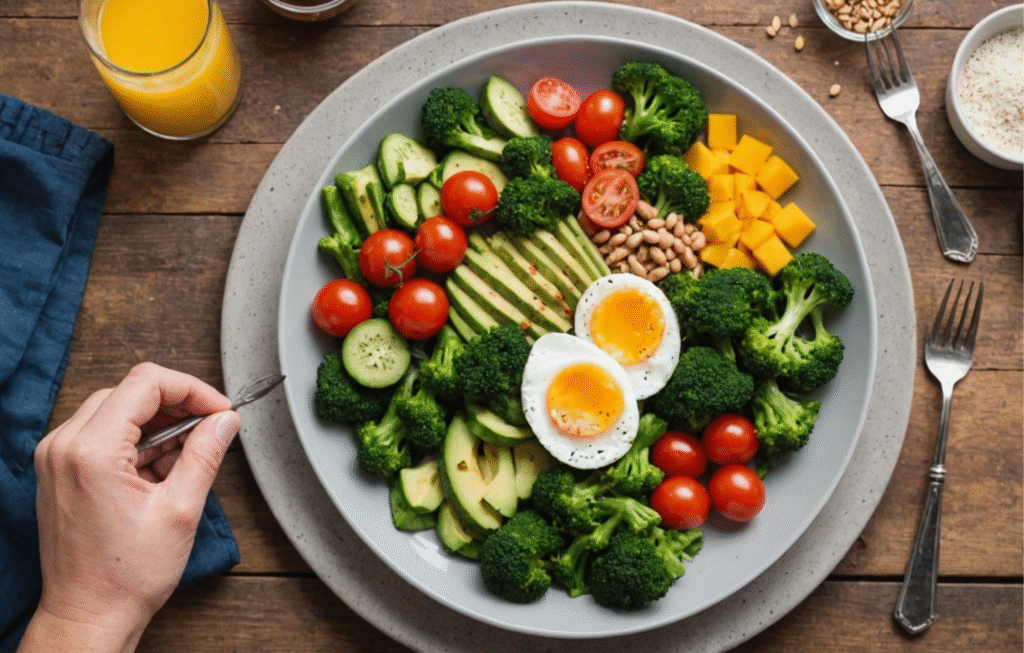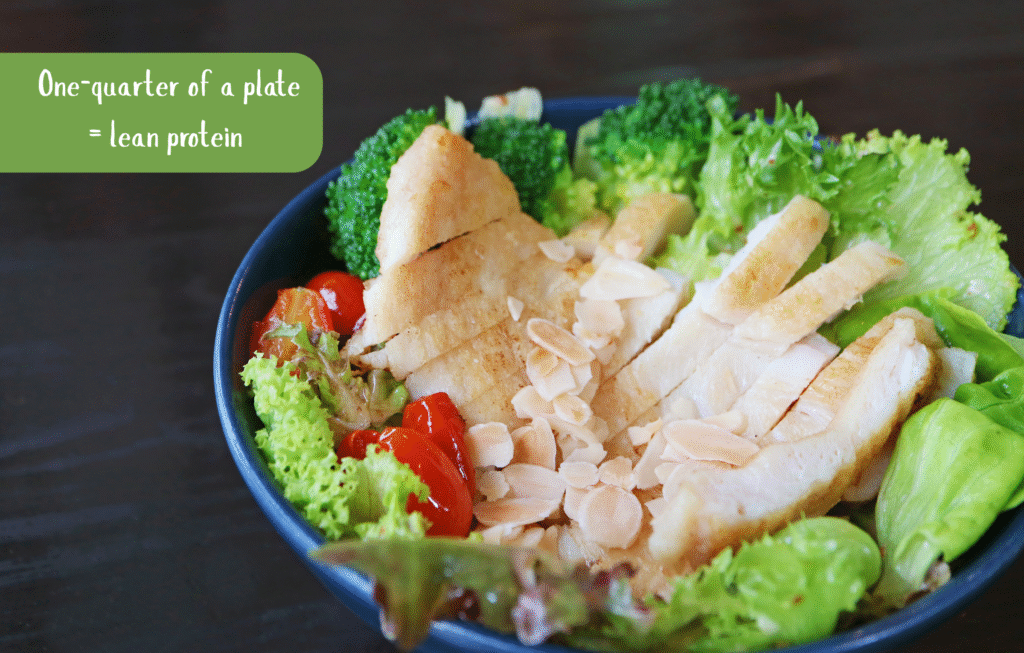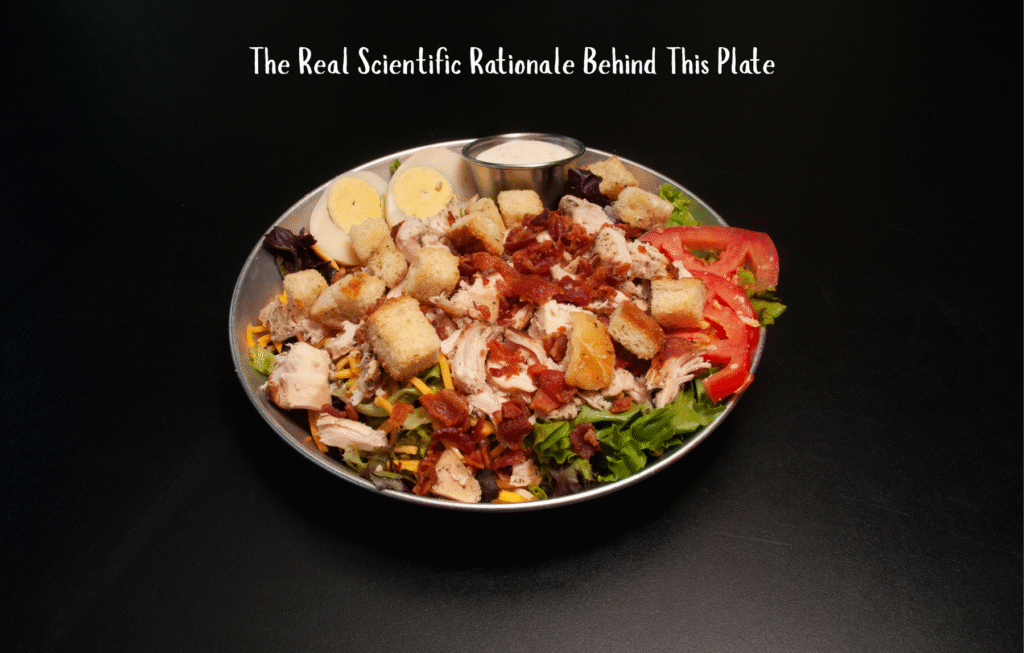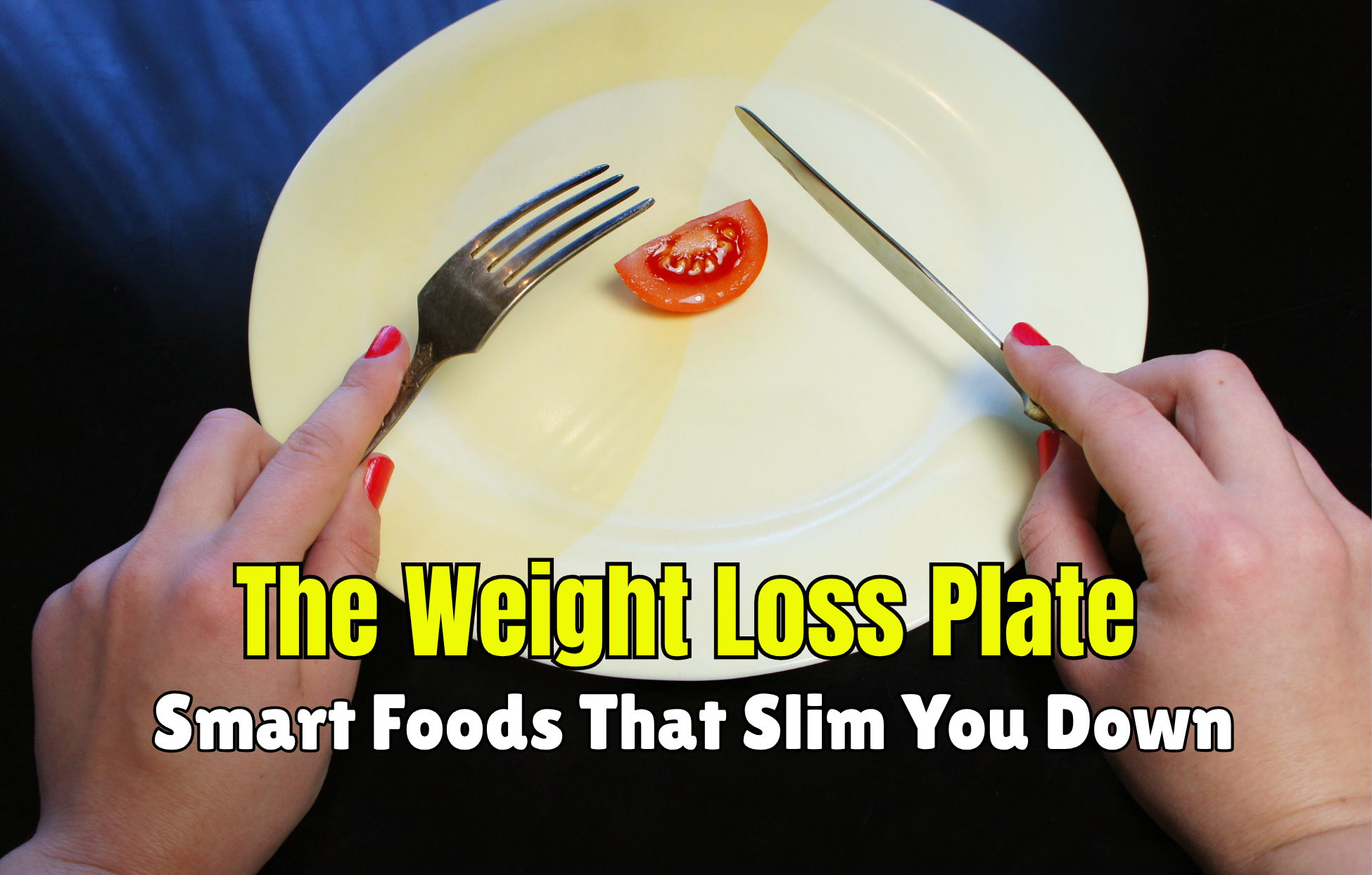Start: Rethinking the “Diet Plate”
When you pay attention “weight loss program meals,” boiled vegetables and flavorless chicken spring to thoughts. Yet, dietary science now shows that dropping weight is less approximately what you pass over and greater about what you install—the makeup of your plate. Eating the right foods could make you experience full on fewer calories and boom your metabolism.
One of the key discoveries in 2025 is that ultra-processed diets do hamper weight loss, even when nutrients and calories are the same. A University College London randomized trial revealed that individuals who ate a minimally processed diet lost double the amount of weight, yet both cohorts had identical calorie targets. That suggests that it’s not only what you consume, but what you eat—that’s more important.
In this article, we’ll introduce the idea of a “weight loss plate”—a plate that encourages light, balanced, and lasting weight loss—and describe the science behind each element.
Principles of a Weight Loss Plate

There are some simple principles to make any meal intelligent, not “weak”:
- Volume + Low Energy Density
Foods with a lot of water and fiber give you more filling volume for fewer calories. Like vegetables, soups, etc. - Lean Protein + More Satiety
Protein takes more energy (thermic effect) to digest the body and keeps muscle mass. - Complex Carbohydrates + Resistant Starch
Whole grains, pulses, and fiber carb sources take a longer time to digest, keep blood sugar stable, and promote a healthy gut microbiota. - Healthy fats, but in moderation
Add healthy fats such as nuts, seeds, avocados, and extra virgin olive oil, but in moderation. - Reduce ultra-processed foods
As far as viable, choose natural, minimally processed meals instead of packaged and flavor-enriched processed ingredients. The UCL trial suggests that processing in itself can also have an effect on urge for food regulation and calorie consumption. - Be mindful and flexible
It’s not always wrong to be guilty of the odd treat—it is essential to hold to a steady eating pattern and not fall into the trap of perfectionism.
How to Build a Plate: Smart Food Choices
Here’s how to half a weight loss plate and what to put in each section:
1. Half the plate = Non-starchy vegetables and bulk foods
Vegetables are where it all begins. Since they contain fewer calories and a lot of fiber, they fill you up fast and make you eat slower.
Smart Choices:
- Leafy greens such as spinach, arugula, and kale
- Broccoli, cauliflower, and Brussels sprouts
- Cucumbers, pumpkin, eggplant, zucchini, bell peppers
- Green beans, mushrooms, and tomatoes
You can eat them raw, lightly cooked, or as a salad. You may consume larger amounts and worry less about calories.
2. One-quarter of a plate = lean protein

Protein is filling and enables keep muscular tissues when losing weight. Eat about 20–30 grams of protein per meal.
Intelligent Protein Sources:
- Skinless chicken or turkey
- Fish and seafood (cod, salmon, shrimp, etc.)
- Eggs or egg whites
- Low-fat milk or Greek yogurt
- Plant-based: tofu, tempeh, lentils, beans
There are also some treated options that are good if you make good alternatives-like low tuna, regular Greek yogurt, etc. And when you eat protein with high fiber roads, it slows digestion and makes you feel full.
3. A quarter of the plate = smart carbs and whole grains
All carbs are not created equal. Notice which carbs are—select them as unprocessed as possible.
Intelligent Carb Sources:
- Whole grains such as brown rice, quinoa, oats, and barley
- Whole-wheat pasta or sprouted grain pasta
- Lentils and legumes
- Starchy vegetables such as sweet potatoes, pumpkin, and so forth
- Fruits (such as plums, apples, and pears) — in moderation
Resistant starches — such as those found in cold-cooked potatoes, green banana flour, and lentils — feed healthy gut bacteria and enhance insulin sensitivity.
4. Include a small amount of healthy fat
Fat makes food more tasty and filling, and aids in the absorption of vitamins A, D, E, and K. But fat is calorie-dense, so use restraint.
Smart Fat Choices:
- A teaspoon of extra virgin olive oil
- A few slices of avocado
- A spoonful of nut butter (seed or nut-based)
- A spoonful of flaxseed, chia, or hemp seed
These fats also add flavor and slow down digestion, suppressing appetite.
5. Flavor and Volume Enhancement — Desired Additions
- Broth soups (vegetable or chicken) to slightly fill you up before food
- Herbal tea or sparkling water (unsweetened)
- Herbs, spices, lemon juice, vinegar, garlic, ginger — these add flavor without a calorie burden
- Tip: Keep dressings, sweet sauces, or high-calorie condiments to a minimum
The Real Scientific Rationale Behind This Plate

A minimally processed diet is superior
A 2025 clinical trial conducted by UCL discovered that individuals with a minimally processed diet had improved overall health. Individuals on the highly processed diet lost a little over 2% of their body weight, whereas individuals on the highly processed diet lost about 1%—and both diets had a similar calorie target. The minimally processed diet group cut daily calories by ~290, whereas the other reduced calories by ~120. Processing influences satiety, cravings, and spontaneous energy intake—not calories.
Therefore, as far as possible, the dependence on industrially cooked foods and builds foods using real foods with full food will automatically create a calorie deficit on your plate.
Smart Choices Are Possible Even in Processed Foods
It is not needed to avoid processed foods entirely. A few well-chosen processed foods may be useful:
- A can of chicken or tuna (in water, low salt)
- Plain Greek yogurt or skyr
- Frozen vegetables (without butter or sauce)
- Whole-grain bread with less sugar
- Low-salt canned beans
These choices are easy and enable you to eat smart.
The Combined Effect of Protein + Fiber
When you consume a high-protein food and pair it with fiber-containing carbs and vegetables, it curbs hunger and diminishes the desire to snack or overeat later during the day. Hence, this composition—half plate of veggies + quarter protein + quarter intelligent carbs—is effective.
Plate Ideas for Weight Loss
The following are some realistic meal ideas:
Breakfast
- Steel-cut oats (¼ plate) + berries and chia seeds
- Greek yogurt (¼ plate) + fruit and nut butter
- Scrambled egg whites with side + spinach (¼ plate protein + vegetables)
Lunch
- Grilled chicken breast (¼ plate protein)
- Salad — cucumber, tomato, mixed greens, bell pepper (½ plate)
- Quinoa or lentil salad (¼ plate) + lemon and teaspoon of olive oil dressing
Dinner
- Baked salmon (¼ plate protein)
- Roasted mushrooms, zucchini, broccoli (½ plate vegetables)
- Sweet potato or brown rice (¼ plate carbs)
Snacks/Additional Items
- Apple or carrot sticks
- Cottage cheese or Greek yogurt + berries
- Some nuts (amount) (Note: Air-popped popcorn (no butter))
Make the Plate Model Work: Practical Tips
- Prep and Batch Cook
- Chop the vegetables, cook the proteins, and prepare the carbs ahead of time. This will make simple choices and poor ones less likely.
- Check Fat and Nuts Carefully
- Use measuring spoons first to assist you in estimating the right amount.
- Get Vegetables Exciting
- Spices, roasting, grilling, seasoning—these will get vegetables delicious and appetizing.
- Avoid Skipping Meals
- A satisfying and balanced plate keeps you full in the long term and avoids overeating.
- Track by landmarks, not perfection
- Have a food diary or app, but don’t analyze every calorie—just observe whether your plate approximates the model.
- Enjoy the odd treat
- A small amount of chocolate, a light dessert—but fit it into your weekly calorie or plate budget.
- Move regularly
- Diet accounts for 70–80% of weight loss; but activity (walking, strength training, etc.) significantly helps sustain your results.
- Be patient and consistent
- Fat loss is slow. Weight fluctuations are normal. Stick with a pattern and allow your body time.
Common Challenges and How to Overcome Them
- Relying Too Much on “Diet” or “Low-Fat” Processed Products
These are made to taste delicious and can encourage binge eating. - Overdosing on “Healthy” Foods
Nuts, dried fruit, whole grains—these may all be healthy, but if consumed in excess, the calories can backfire. - Ignoring Hunger, Stress, or Lack of Sleep
These factors can influence your unconscious food decisions. It’s important to work with them. - Expecting Miracles
The Weight Loss Plate turns your surroundings in your direction. It’s not magic, but small but persistent changes.
How Much Weight Can You Lose—Realistic Expectations
No individual plate will melt away fat, but if you adhere to this model regularly for weeks and months, you will notice a gradual effect. In a UCL study, a minimally processed diet led to ~2% weight loss during 8 weeks. If continued, this would amount to ~9–13% weight loss in men and ~5–9% weight loss in women over a year.
Long-term trials also indicate that the use of digital meal planning tools results in a ~5–7% sustainable weight loss. If you pair the Smart Plate with exercise and being patient, these goals are very realistic.
Conclusion
The Weight Loss Plate is a sparkling approach: it does not dictate what to depart off, but what to feature. When you load your plate with in most cases vegetables, lean protein, healthful carbohydrates, and minimally processed ingredients, you create ingesting a balanced, natural, and sustainable practice.
The 2025 clinical takeaways are even more mentioned: Minimally-processed, entire-meals-based eating regulates starvation, lessens cravings, and creates a natural calorie deficit impartial of antique-school calorie restrict.
From a PlateGet moving. Discover the foods, textures, and mix-ups that you like but serve your purposes. In time, your “weight reduction plate” will be second nature—and the outcomes will reveal themselves.
FAQs
Q1: What is the “Weight Loss Plate” concept?
A: A balanced plate with half vegetables, a quarter lean protein, and a quarter smart carb, enhancing satiety, metabolism, and long-term weight loss through whole foods with minimal processing.
Q2: Why exclude ultra-processed foods on a weight loss diet?
A: Ultra-processed foods induce hunger and stimulate appetite, resulting in greater calorie consumption. Minimally processed diets suppress appetite and maintain natural calorie deficits.
Q3: How much protein should be on a weight loss plate?
A: Target 20–30 grams of lean protein at mealtime from foods such as chicken, fish, eggs, or vegetarian alternatives to maintain muscle and boost fullness.
Hi, I’m veda, a professional health content writer and passionate wellness advocate at HealthTipsIndia.com
. With years of experience in writing evidence-based, reader-friendly articles, I specialize in creating content that empowers people to live healthier, more balanced lives. Whether it’s nutrition, fitness, natural remedies, or preventive healthcare, I translate complex medical concepts into actionable tips tailored for the Indian lifestyle. My goal? To make trustworthy health information accessible to everyone—one article at a time.

